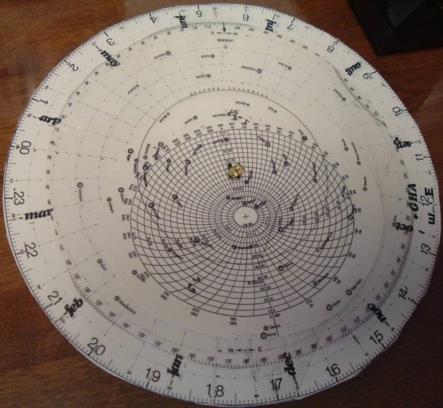
NavList:
A Community Devoted to the Preservation and Practice of Celestial Navigation and Other Methods of Traditional Wayfinding
Re: Modifacation to 2102-D
From: Byron Franklin
Date: 2009 Aug 12, 10:16 -0700
From: Byron Franklin
Date: 2009 Aug 12, 10:16 -0700
9:25 AM The set up as shown on my Astronomer. Hope you can read the Base Disk? You DR. or yard at home. 45N,71W Feb 4 observer GMT 20:56. There are 3 disk involved 1 Base disk(carries all needed information,)2 horizon Disk, 3 star disk. Place the horizon disk on the base disk and rotate it to 71w. Your sky and horizon is set up to your closest LAT & LONG. Find &Read the GMT at Feb 4= 20:56 off the base disk. You want to observe at GMT 8:38. The outer rim is GMT only. Add 20:56 and 8:38 together= 29:34 subtract 24:hours leaving 5:34. Place the star disk on the disk and rotate Aries to GMT 5:34. Done! your sky is set-up. It that easy and quick. Find the month & day, read the GMT add the Gmt that you want to observe, set Aries to that time. Note the 20:54 is equal to the start (GMT 00 of the day for Feb 4. Now you can advance time from 5:34 as desired 5:34 is really the observe time of 8:38. You can advance to any sky occurrence ,(rise set what ever you desire ) read the time off the base disk at Aries and subtract the Month and day time to get the GMT. Each degree equals 1 day and 4 minutes of time. This simple use, was made to educate and attract the young. The Astronomer was mad to teach Celestial Navigation. The instructor if he looks close will see every item of his course of instruction. --~--~---------~--~----~------------~-------~--~----~ NavList message boards: www.fer3.com/arc Or post by email to: NavList@fer3.com To , email NavList-@fer3.com -~----------~----~----~----~------~----~------~--~---








